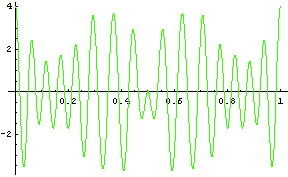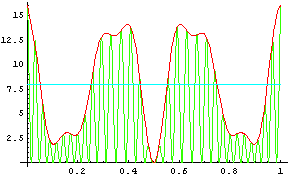
The transmitted multicarrier signal corresponding to a Golay complementary sequence.

The envelope power of the above signal has a peak value at most twice its
mean value.
The technique of orthogonal frequency division multiplexing, for transmitting the information represented by a binary sequence over multiple carrier frequencies simultaneously, has been under consideration for several decades. One of the principal reasons for its failure to gain widespread acceptance as a modulation technique for wireless transmission in a local area network is that the peak value of the envelope power of the resulting signal can grow very large compared with its mean value. This represents a serious constraint on the use of inexpensive portable devices with limited battery power.
In 1999, Jim Davis and I showed how to overcome the peak-to-mean power ratio problem while simultaneously achieving powerful algebraic error-correction capability. The theoretical basis for this result was a previously unrecognised connection between Golay complementary sequences and the classical Reed-Muller codes, which extends in a natural way to quaternary, octary and higher-order codes. This work led to two granted patents and several proposals for multicarrier wireless transmission in international standards bodies. It has been cited in over 250 journal publications.


The envelope power of the above signal has a peak value at most twice its
mean value.